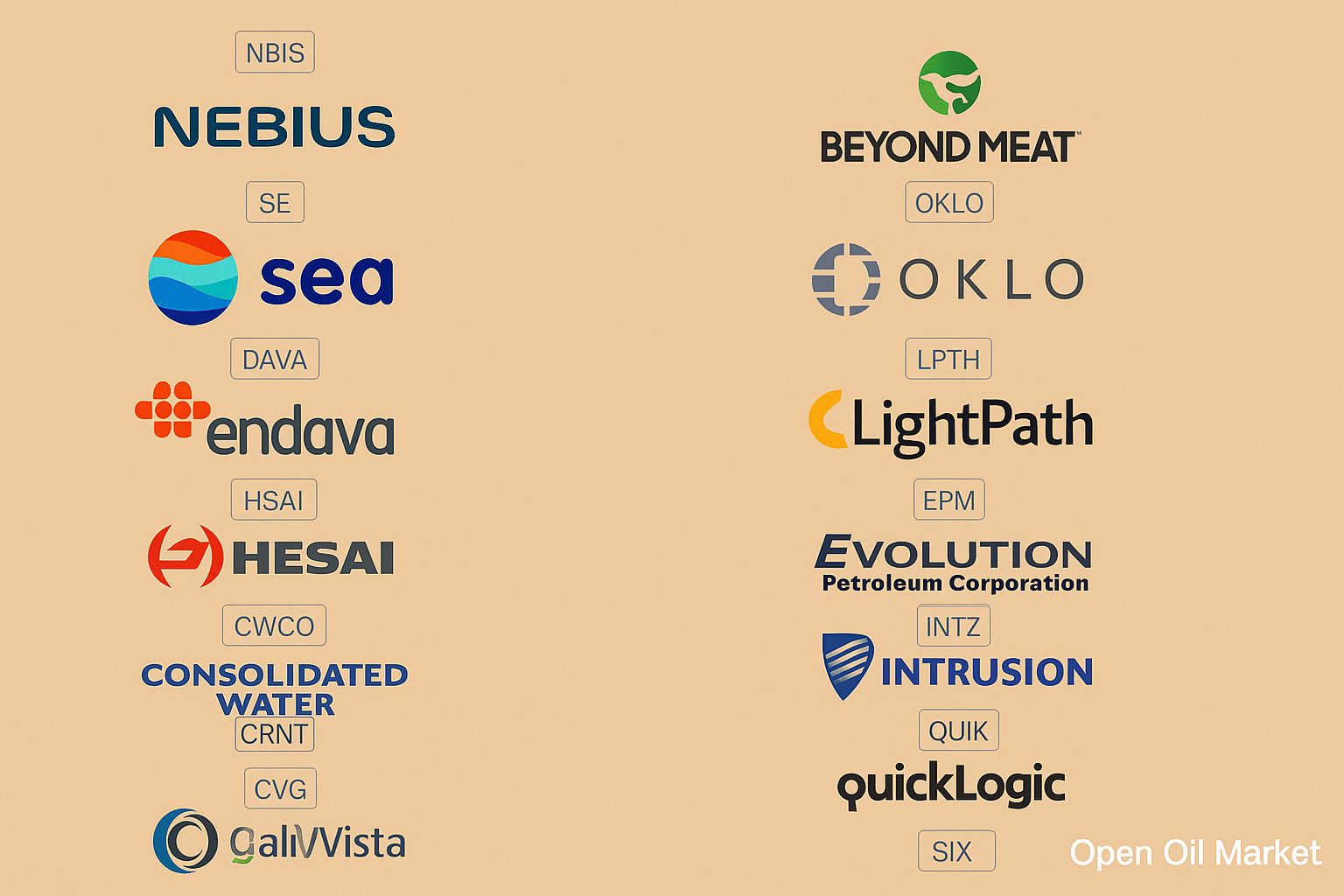
Overview of Key Economic Events for the Week 3–8 November 2025: PMI, Non-Farm Payrolls, Central Bank Decisions and Leading Company Reports. Analysis of Factors Impacting Market Volatility and Investment Strategies.
The upcoming trading week promises to be rich with significant economic events – ranging from PMI and inflation publications to reports from major corporations. Investors worldwide will be closely monitoring macroeconomic data and decisions made by central banks, alongside corporate earnings reports (EPS results) from American and European companies. Portfolio diversification and readiness for heightened market volatility will be crucial. We present an overview of the key events scheduled for the week of 3 to 8 November 2025.
PMI and Macroeconomic Statistics
Preliminary PMI data for manufacturing and services will be released on Monday. According to October surveys by S&P Global/ISM, business activity in the US continues to exhibit growth, although corporate optimism is somewhat declining:contentReference[oaicite:0]{index=0}. The flash index for the eurozone showed stabilisation in September (at 50.0, exceeding expectations) – indicating signs of local production growth:contentReference[oaicite:1]{index=1}. Investors will also consider data on business activity in China and other countries (services in China improved in September:contentReference[oaicite:2]{index=2}). On Tuesday, the US trade balance for September and Job Openings and Labor Turnover Survey (JOLTS) data will be released – critical indicators for the labour market. On Wednesday, data on the US Services PMI (ISM Services PMI) will be published, followed by retail sales data for the eurozone on Thursday.
In light of these releases, inflation will remain a point of focus: on Monday, consumer price index (CPI) figures for October from Turkey and Switzerland will be revealed, and at the end of the week, similar data from Mexico and Canada will follow. Rising inflation continues to be a key factor for markets, influencing monetary policy and volatility.
Employment Reports
Ahead of the Non-Farm Payroll report, preliminary data will provide a comprehensive view of the labour market: average hourly earnings (3 November) and the ADP employment reports (5 November). The climax will arrive on Friday, when the US Bureau of Labor Statistics will publish the November NFP report (Non-Farm Payrolls) alongside unemployment rates and hours worked:contentReference[oaicite:3]{index=3}. It is anticipated that job growth in October will slow, potentially affecting Federal Reserve rate expectations.
Central Bank Meetings
Several key decisions from regulators will be made this week. The Reserve Bank of Australia will convene on Tuesday – forecasts are conservative (a pause is expected). The Swedish Riksbank and the Norwegian Central Bank will host meetings on Wednesday and Thursday respectively: markets anticipate that rates will be maintained, although the Riksbank may retain a stimulative stance. On 6 November, the Bank of England is expected to leave the rate at 4.0%:contentReference[oaicite:4]{index=4}: despite economic slowdown, inflation in the UK remains high (≈3.8%):contentReference[oaicite:5]{index=5}. On Friday, attention will turn to the decision of the Bank of Mexico – given the rise in Mexican CPI, a hawkish tone may prevails. These decisions will shape rate dynamics and risk appetite across global markets.
Major Corporate Reports
The earnings season for major corporations (corporate reports, EPS) continues. Among the S&P 500, noteworthy reports include:
- Uber Technologies (transport) – Q3 results will be published on 4 November, before market opening:contentReference[oaicite:6]{index=6}.
- Shopify (e-commerce) – September Q3 report will be released on 4 November before the market opens:contentReference[oaicite:7]{index=7}.
- Spotify (media/streaming) – Q3 is scheduled for 4 November before market opening (conference call at 8:00 AM Eastern Time):contentReference[oaicite:8]{index=8}.
- Pfizer (pharmaceuticals) – the American healthcare giant will release its Q3 results on 4 November before market opening:contentReference[oaicite:9]{index=9}.
- Advanced Micro Devices (AMD) (semiconductors) – results are expected on 4 November after market close:contentReference[oaicite:10]{index=10} (conference call at 5:00 PM ET):contentReference[oaicite:11]{index=11}.
- McDonald’s (restaurant business) – quarterly report is scheduled for 5 November before market opening (conference call at 8:30 AM ET):contentReference[oaicite:12]{index=12}.
- AstraZeneca (pharmaceuticals, listed in Euro Stoxx 50) – Q3 results are expected on 6 November before the market opens (call at 8:00 AM ET):contentReference[oaicite:13]{index=13}.
- ConocoPhillips (energy) – quarterly results for September will be released on 6 November before the market opens (call at 12:00 PM ET):contentReference[oaicite:14]{index=14}.
During these days, investors will focus not only on revenues but also on key profitability metrics – EPS (EPS reports) – as analysed by experts. Sub-sectors may exhibit mixed performances: cyclical industries and commodities may contrast with high-tech and services sectors.
Cryptocurrencies and Token Unlocks
The cryptocurrency market remains in search of a bottom, with large token unlocks likely to generate short-term volatility. According to CryptoRank, massive unlocks are anticipated in November 2025 – approximately $2.1 billion worth of tokens will be released into circulation. Leading the list is SUI: tokens worth $146.6 million will be unlocked on 1 November:contentReference[oaicite:15]{index=15}. Other notable projects include Aster, Athena, Aptos, and others (per CryptoRank):contentReference[oaicite:16]{index=16}. These events could increase supply in the market and exert additional downward pressure on cryptocurrency prices, which investors should consider when managing risks.
Market Volatility and Investment Ideas
The cumulative effect of the aforementioned factors raises the risk of high market volatility. Typically, heightened uncertainty drives investors towards defensive assets: dividend stocks, gold, long government bonds. However, sharp corrections can present opportunities for selecting undervalued stocks in cyclical sectors. This week’s investment ideas may involve rebalancing portfolios in favour of resilient sectors (such as consumer staples and healthcare) and seeking short tactical opportunities during downturns in technology stocks. It is essential to monitor liquidity and maintain strategic flexibility, given the heightened risks of uncertainty and the influence of macroeconomic data on the market.
Conclusion: This week, investors will once again find themselves at the crossroads of global macroeconomic releases and corporate reports. PMI, inflation, and NFP data will establish the tone for monetary policy expectations, while major corporate earnings will clarify sector prospects. Additional drivers will include instability in the cryptocurrency market (token unlocks) and geopolitics, hence the readiness for increased volatility will be vital. Maintaining a focus on long-term trends, investors should select their instruments carefully and employ conservative approaches (diversification, hedging) to balance risk and return during this eventful period.




